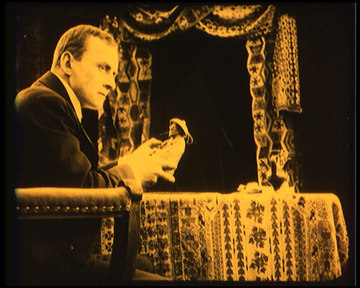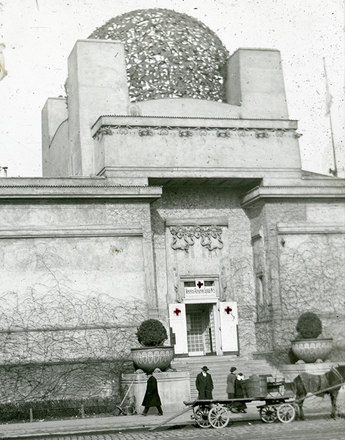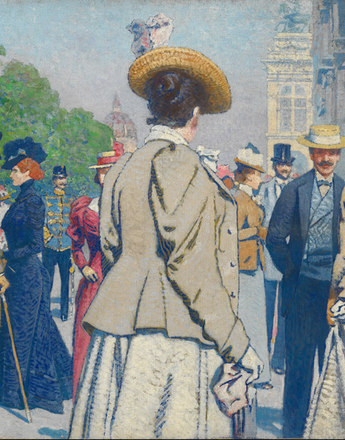Serving the public – the film and cinema industry before and during the First World War

The Mandarin, film still, A 1918
Copyright: Filmarchiv Austria
Partner: Filmarchiv Austria
-

Magda Sonja in the film “Um ein Weib”, A 1918
Copyright: Filmarchiv Austria
Partner: Filmarchiv Austria
The protests against the ‘dreadful state of the cinema’ by teachers, parents, clergy and theatre directors obliged the industry to close ranks. In 1908 the Reich Association of Cinematograph owners was founded, and the new trade magazines (Kinematographische Rundschau, Der Komet) saw themselves as the mouthpiece of the industry, making known its interests and providing information about new trends and developments. An important concern revived in 1916 was the demand for the standardization and centralization of censorship and the establishment of an appeals procedure against prohibitions.
The production policy of film-makers was guided by public demand, which, unlike the cinema reformers, wanted good and ‘light’ entertainment. The two main production companies nevertheless went in different directions. Wiener Kunstfilm favoured the filming of literary works with a view to bringing cinema up to the level of theatre and gaining access to ‘official culture’. Sascha-Filmfabrik, by contrast, saw film as an entertainment medium and specialized in grotesque and farce.
The outbreak of the First World War had a stimulating effect on the Austro-Hungarian film sector. New companies were founded (Burg-Film, Regent-Film, etc.), existing companies expanded, and the number of films rose steadily – from 42 titles in 1914 to almost 100 in 1918. The film industry experienced a boom that reached its highpoint in the mid-1920s.
During the war the preferred film themes changed. The farces and comic one-acters modelled on international examples gave way to comedies with typically Austrian subjects, stories and characters. The absurdity of the pre-war grotesque was gradually replaced by a certain realism. Towards the end of the war there was also an increase in productions focusing on magic, the macabre and the supernatural. From 1917 a series of films appeared that might be described as the forerunners of Expressionism. They included Der Brief einer Toten (A 1917), Das schwindende Herz (A 1917), Die Liebe einer Blinden (A 1917), Das andere Ich (A 1918) and Der Mandarin (A 1918). Magda Sonja, the epitome of the femme fatale of the late 1910s, became the new star of pre-Expressionist Austrian cinema.
Translation: Nick Somers
Bono, Francesco: Bemerkungen zur österreichischen Filmwirtschaft und Produktion zur Zeit des Stummfilms, in: Bono, Francesco/Caneppele, Paolo/Krenn, Günter: Elektrische Schatten. Beiträge zur österreichischen Stummfilmgeschichte, Wien 1999, 47-75
Fritz, Walter: Im Kino erlebe ich die Welt. 100 Jahre Kino und Film in Österreich, Wien 1997
-
Chapters
- Film censorship – regulating what was shown
- The Saturn censorship affair
- Combatting ‘dirt and trash’
- Serving the public – the film and cinema industry before and during the First World War
- Organized propaganda: the film department of the War Press Office
- Focuses and aims of war film propaganda
- After the war – the National Film Headquarters: managing the past, warning about the present, and promoting new ideas




